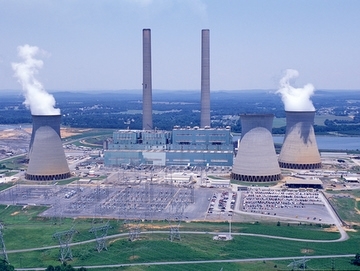-
Georgia Power launches coal ash use project for concrete production
Date posted:
-
-
-
Post Author
Greg Kelsall
-

Georgia Power has announced plans to recycle more than 9 million tonnes of coal ash stored at its Plant Bowen at a rate of around 600,000 tonnes per year. This will see the largest beneficial use project for coal ash in the US, excavating ash from the plant near Cartersville and converting it into concrete for construction products across Georgia and the Southeast.
The project is being carried out with Eco Material Technologies, a producer of sustainable cementitious materials and cement replacement products, which will manage the project at Plant Bowen. It is the latest development since Georgia Power partnered with the Electric Power Research Institute (EPRI) to open a research facility at Plant Bowen in 2021, called the Ash Beneficial Use Center, to identify, test and speed the development of beneficial uses of coal ash. The facility allows for pilot projects and testing of technologies to continue to increase the recycling and use of coal ash.
Infrastructure installation to accommodate the work at Plant Bowen will begin immediately, with ash removal expected to begin by 2024 and increasing to 600 ktonnes of ash per year.
Georgia Power already recycles 85% of all ash and gypsum, including more than 90% of fly ash it produces, from operations for various beneficial uses such as concrete production as well as other construction products.
As with many coal fired plant, the future of Plant Bowen is uncertain. Two of the plant’s four coal-burning units were due to be retired by 2028 under a proposal Georgia Power submitted to the state Public Service Commission earlier this year.
Overall, this appears to be a good opportunity for the waste, in the form of fly ash from the power generation industry, to contribute to the decarbonisation efforts of the cement and concrete industry. As highlighted in a recent IFRF blog, the global cement and concrete products market produces over 2.5 GtCO2/y globally and replacement of cement clinker with alternative cementitious materials could potentially achieve around 9% of the sectors net zero ambition by 2050 according to the Global Concrete and Cement Association. Where the coal plant is fitted with the most efficient CCUS technology, this could allow currently produced fly ash to be utilised in a net zero compliant way, particularly in countries such as China and India which retain a high percentage of coal based power generation and are global leaders in the production of cement.
A good review of the beneficial uses of coal fly ash is provided by the International Centre for Sustainable Carbon (ICSC).
